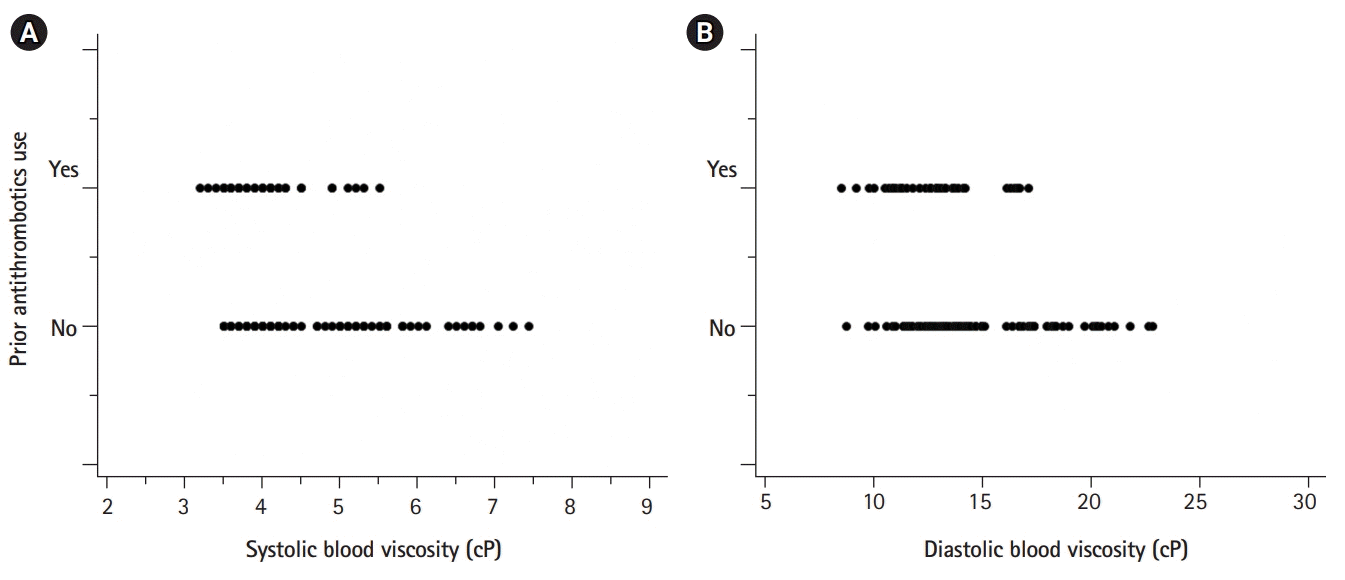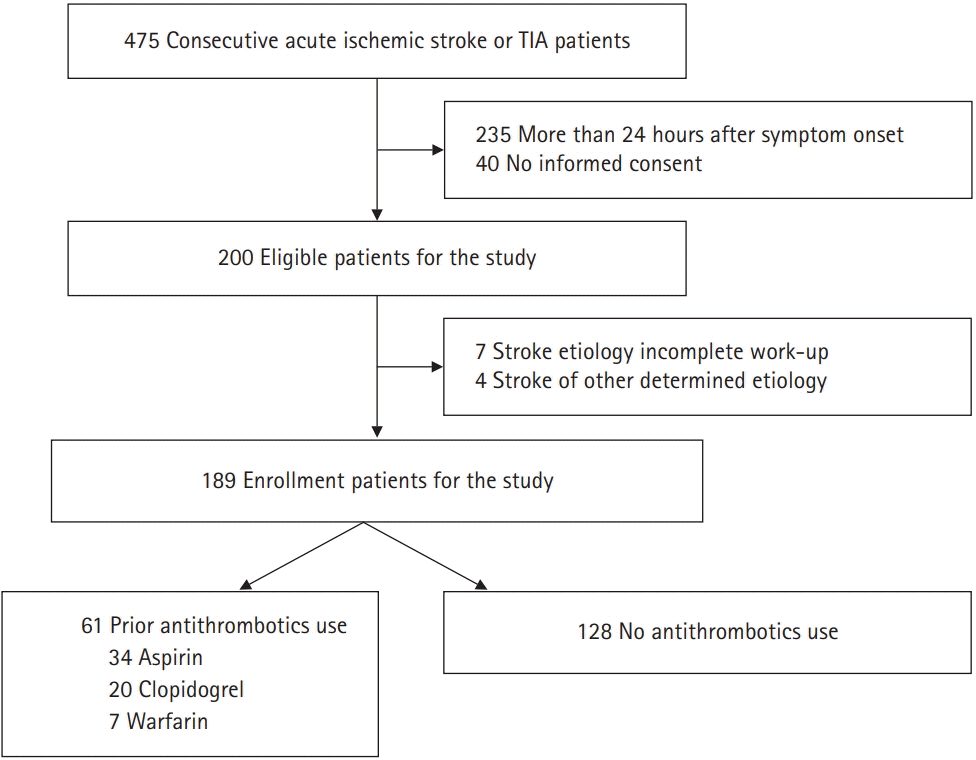1. Furukawa K, Abumiya T, Sakai K, Hirano M, Osanai T, Shichinohe H, et al. Increased blood viscosity in ischemic stroke patients with small artery occlusion measured by an electromagnetic spinning sphere viscometer. J Stroke Cerebrovasc Dis. 2016; 25:2762–9.

2. Pop GA, Duncker DJ, Gardien M, Vranckx P, Versluis S, Hasan D, et al. The clinical significance of whole blood viscosity in (cardio)vascular medicine. Neth Heart J. 2002; 10:512–6.
3. Song SH, Kim JH, Lee JH, Yun YM, Choi DH, Kim HY. Elevated blood viscosity is associated with cerebral small vessel disease in patients with acute ischemic stroke. BMC Neurol. 2017; 17:20.

4. Baskurt OK, Meiselman HJ. Blood rheology and hemodynamics. Semin Thromb Hemost. 2003; 29:435–50.

5. Kwaan HC. Role of plasma proteins in whole blood viscosity: a brief clinical review. Clin Hemorheol Microcirc. 2010; 44:167–76.

6. Mury P, Faes C, Millon A, Mura M, Renoux C, Skinner S, et al. Higher daily physical activity level is associated with lower RBC aggregation in carotid artery disease patients at high risk of stroke. Front Physiol. 2017; 8:1043.

7. Noh HJ, Seo SW, Jeong Y, Park JE, Kim GH, Noh Y, et al. Blood viscosity in subcortical vascular mild cognitive impairment with versus without cerebral amyloid burden. J Stroke Cerebrovasc Dis. 2014; 23:958–66.

8. Cowan AQ, Cho DJ, Rosenson RS. Importance of blood rheology in the pathophysiology of atherothrombosis. Cardiovasc Drugs Ther. 2012; 26:339–48.

9. Danesh J, Collins R, Peto R, Lowe GD. Haematocrit, viscosity, erythrocyte sedimentation rate: meta-analyses of prospective studies of coronary heart disease. Eur Heart J. 2000; 21:515–20.

10. Grotemeyer KC, Kaiser R, Grotemeyer KH, Husstedt IW. Association of elevated plasma viscosity with small vessel occlusion in ischemic cerebral disease. Thromb Res. 2014; 133:96–100.

11. Cecchi E, Marcucci R, Poli D, Antonucci E, Abbate R, Gensini GF, et al. Hyperviscosity as a possible risk factor for cerebral ischemic complications in atrial fibrillation patients. Am J Cardiol. 2006; 97:1745–8.

12. Fisher M, Meiselman HJ. Hemorheological factors in cerebral ischemia. Stroke. 1991; 22:1164–9.

13. Kennedy J, Hill MD, Ryckborst KJ, Eliasziw M, Demchuk AM, Buchan AM, et al. Fast assessment of stroke and transient ischaemic attack to prevent early recurrence (FASTER): a randomised controlled pilot trial. Lancet Neurol. 2007; 6:961–9.

14. Ernst E, Matrai A, Kollar L. Placebo-controlled, double-blind study of haemodilution in peripheral arterial disease. Lancet. 1987; 1:1449–51.

15. Papaioannou TG, Stefanadis C. Vascular wall shear stress: basic principles and methods. Hellenic J Cardiol. 2005; 46:9–15.
16. Jung LY, Lee SR, Jung JM, Kim YS, Lee SH, Rhee KS, et al. Rosuvastatin reduces blood viscosity in patients with acute coronary syndrome. Korean Circ J. 2016; 46:147–53.

17. Lee CH, Jung KH, Cho DJ, Jeong SK. Effect of warfarin versus aspirin on blood viscosity in cardioembolic stroke with atrial fibrillation: a prospective clinical trial. BMC Neurol. 2019; 19:82.

18. Rosenson RS. Treatment with aspirin and dipyridamole is more effective than aspirin in reducing low shear blood viscosity. Microcirculation. 2008; 15:615–20.

19. Stäubli M, Reinhart W, Straub PW. Blood viscosity and red cell deformability after aspirin in vivo. A double-blind controlled trial. Atherosclerosis. 1982; 41:167–70.
20. Hitosugi M, Niwa M, Takatsu A. Changes in blood viscosity by heparin and argatroban. Thromb Res. 2001; 104:371–4.

21. Ciuffetti G, Lombardini R, Pirro M, Lupattelli G, Mannarino E. Clopidogrel: hemorheological effects in subjects with subclinical atherosclerosis. Clin Hemorheol Microcirc. 2001; 25:31–9.
22. Dawson DL, Zheng Q, Worthy SA, Charles B, Bradley DV Jr. Failure of pentoxifylline or cilostazol to improve blood and plasma viscosity, fibrinogen, and erythrocyte deformability in claudication. Angiology. 2002; 53:509–20.

23. Thomas DJ, Marshall J, Russell RW, Wetherley-Mein G, du Boulay GH, Pearson TC, et al. Effect of haematocrit on cerebral blood-flow in man. Lancet. 1977; 2:941–3.





 PDF
PDF Citation
Citation Print
Print




 XML Download
XML Download